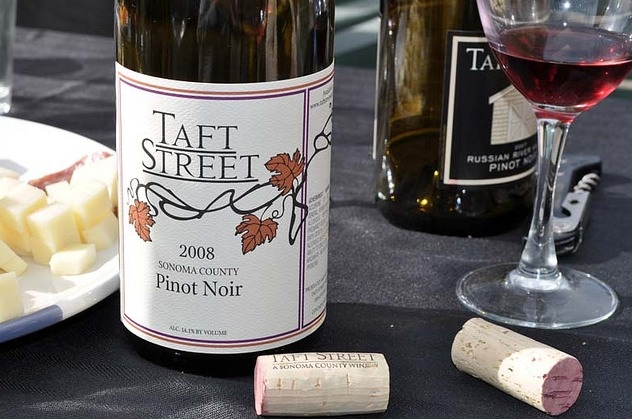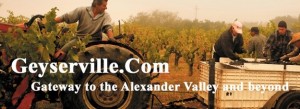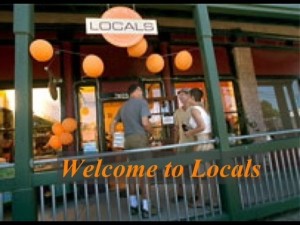As a Seattleite with numerous West Coast amenities at her disposal—gorgeous topography, picturesque beaches, a necklace of mountains, and three prominent wine regions mere hours away—it’s been hard to justify a trip to California specifically to drink wine. That changed when my friend from Los Angeles called me to coordinate a girls’ wine getaway with the hope we could meet somewhere in the middle. Naturally, Sonoma and Napa were our top choices. Both are renowned for their world-class wines, stunning terrain, fine dining, and luxury lodging. But we wondered: what are their differences and how should we choose between them? Shortly after my friend’s call, I saw The Wine Road was sponsoring a Seattle tasting event with 20 Sonoma-area wineries pouring over 50 wines to benefit a local nonprofit. It was touted as an opportunity to meet the winemakers and discover more about wine. To me, it was a perfect chance to whet my novice palate and garner a clearer picture about California’s esteemed wine regions.  My first stop at the event was Taft Street Winery, located in Sebastopol, California. Manning the table was Taft’s CEO and General Manager, Mike Martini. I asked Mike what a non-local should know about Sonoma and how one should decide between Napa versus Sonoma. Mike had generous things to say about Napa and their decadent, world-renowned Cabernets, but to him, what sets Sonoma apart from Napa is its laid-back vibe. In addition to the delicious, highly regarded wine varietals produced in Sonoma—there’s beer! Just that week, Mike had learned Sonoma County now has 28 craft breweries! At the end of the day, Mike said Sonoma is all about “fun.” Mingling with other guests, I met two California natives now living in Seattle. When I asked the pair their thoughts on Napa vs. Sonoma, they said that they’d watched Napa become chock full of “transplants and trust funders” over the years. It’s changed the feel of the place, they said, and if a person’s looking for a more down-to-earth atmosphere, Sonoma is the place to go. The ladies also informed me about several smartphone apps that are indispensable to have when planning a drinking venture through any wine region. Top of their list for the tech-savvy traveler: “Winery Passport,” “Brewery Passport,” and “Delectable Wine.” From the women, I also learned that “Sonoma” can connote Sonoma Valley, Sonoma County, and Sonoma town. A fact that admittedly shocked this Washington State native.
My first stop at the event was Taft Street Winery, located in Sebastopol, California. Manning the table was Taft’s CEO and General Manager, Mike Martini. I asked Mike what a non-local should know about Sonoma and how one should decide between Napa versus Sonoma. Mike had generous things to say about Napa and their decadent, world-renowned Cabernets, but to him, what sets Sonoma apart from Napa is its laid-back vibe. In addition to the delicious, highly regarded wine varietals produced in Sonoma—there’s beer! Just that week, Mike had learned Sonoma County now has 28 craft breweries! At the end of the day, Mike said Sonoma is all about “fun.” Mingling with other guests, I met two California natives now living in Seattle. When I asked the pair their thoughts on Napa vs. Sonoma, they said that they’d watched Napa become chock full of “transplants and trust funders” over the years. It’s changed the feel of the place, they said, and if a person’s looking for a more down-to-earth atmosphere, Sonoma is the place to go. The ladies also informed me about several smartphone apps that are indispensable to have when planning a drinking venture through any wine region. Top of their list for the tech-savvy traveler: “Winery Passport,” “Brewery Passport,” and “Delectable Wine.” From the women, I also learned that “Sonoma” can connote Sonoma Valley, Sonoma County, and Sonoma town. A fact that admittedly shocked this Washington State native.  Size is certainly a point to consider when planning to visit the expansive terrain of the Sonoma County versus the smaller Napa County. Although it’s smaller, I’ve learned Napa’s notorious traffic jams are as talked about as its wines. Sonoma County is vast and diverse, with three distinct wine regions and 16 American Viticulture Areas (AVAs). When drinking is the primary focus of a trip, it’s suggested that tourists take a bus or hire a private driver to tour the wineries. It was also recommended that my friend and I stay in one of the small towns like Sonoma’s Geyserville or Healdsburg with dining options, wineries, and tasting rooms all centrally located and walkable to lodging. Cruising the tables of The Wine Road event, I noted the many winery placards with Italian names. This far north, it’s rare to hear people talk about the Italian heritage deeply embedded throughout the region.
Size is certainly a point to consider when planning to visit the expansive terrain of the Sonoma County versus the smaller Napa County. Although it’s smaller, I’ve learned Napa’s notorious traffic jams are as talked about as its wines. Sonoma County is vast and diverse, with three distinct wine regions and 16 American Viticulture Areas (AVAs). When drinking is the primary focus of a trip, it’s suggested that tourists take a bus or hire a private driver to tour the wineries. It was also recommended that my friend and I stay in one of the small towns like Sonoma’s Geyserville or Healdsburg with dining options, wineries, and tasting rooms all centrally located and walkable to lodging. Cruising the tables of The Wine Road event, I noted the many winery placards with Italian names. This far north, it’s rare to hear people talk about the Italian heritage deeply embedded throughout the region. I spotted uniquely shaped bottles of wine on Jane Portalupi’s table and learned of her grandmother’s tradition of keeping a barrel of homemade vino di tavola on hand in her grocery to pour into any jug a customer brought in. Typically they brought in milk bottles. Jane now sells glass, milk jug-shaped bottles of wine out of her family-owned winery in Healdsburg and on the shelves of Whole Foods – a fitting and poignant evolution. A few tastes in, with glass in hand, I sidled up next to an Amazon executive who’d formerly lived in San Francisco. An avid oenophile with thousands of bottles in his home cellar, he’d spent the ’80s & ’90s servicing the financial accounts of, and making friends with, numerous winemakers from both Sonoma and Napa. He told me he loved the elegance and hospitality production of Napa, but enjoyed the accessibility of Sonoma. Building on my query about the Italian roots so prevalent in Sonoma history, he entertained me with tales of the men of the Louis M. Martini Winery; how an enterprising young Martini got around the strict laws surrounding Prohibition by selling sacramental “home winemaking kits” made out of grape concentrate. Since those heady days of the ’20s, ownership of the Louis M. Martini Winery was handed down through the generations and eventually sold to Gallo in 2002. My new Amazon friend told me the corporatization of many of the Napa-area wineries was also a deterrent for him when choosing between the two regions. Sonoma wineries are still predominately farmer and family owned.
I spotted uniquely shaped bottles of wine on Jane Portalupi’s table and learned of her grandmother’s tradition of keeping a barrel of homemade vino di tavola on hand in her grocery to pour into any jug a customer brought in. Typically they brought in milk bottles. Jane now sells glass, milk jug-shaped bottles of wine out of her family-owned winery in Healdsburg and on the shelves of Whole Foods – a fitting and poignant evolution. A few tastes in, with glass in hand, I sidled up next to an Amazon executive who’d formerly lived in San Francisco. An avid oenophile with thousands of bottles in his home cellar, he’d spent the ’80s & ’90s servicing the financial accounts of, and making friends with, numerous winemakers from both Sonoma and Napa. He told me he loved the elegance and hospitality production of Napa, but enjoyed the accessibility of Sonoma. Building on my query about the Italian roots so prevalent in Sonoma history, he entertained me with tales of the men of the Louis M. Martini Winery; how an enterprising young Martini got around the strict laws surrounding Prohibition by selling sacramental “home winemaking kits” made out of grape concentrate. Since those heady days of the ’20s, ownership of the Louis M. Martini Winery was handed down through the generations and eventually sold to Gallo in 2002. My new Amazon friend told me the corporatization of many of the Napa-area wineries was also a deterrent for him when choosing between the two regions. Sonoma wineries are still predominately farmer and family owned.  Talking to the person who actually grows the wine is a definite draw. My final stop was at Pendleton Estate Vineyard & Winery to chat with owner, Michall Pendleton, who was pouring a delicious, full-bodied Cabernet. At Michall’s by-appointment-only winery, he personally hand selects each grape that goes into his award-winning wines. Michall’s been in business since 2005, following an earlier career as a firefighter. He told me if I can’t visit his winery in person, I can sample a variety of his wines at LOCALS, a tasting room in Geyserville which features the wines of eleven hard-to-find gems. It’s that kind of community, down-home spirit and friendliness that makes Sonoma a standout to me. From many of the winemakers like Michall that so generously spoke with me at the event, I got a sense the region is more about personality and passion than pizazz. I left The Wine Road event with lots of answers and an even deeper wish to familiarize myself with the California wine regions. In the days following the event, I read more about Napa and Sonoma and their ongoing rivalry. It reminded me of Seattle and Portland. Each place has a lot to offer, but is distinctly unique in character and attractions. One is not better than the other, just different. In the end, my friend and I decided Napa is going to have to wait a couple more years as laid-back Sonoma is the clear winner for us. I wasn’t able to chat with the winemakers about the outdoor recreational perks of visiting Sonoma, but my table is stacked with a pile of must-read books (see below) to devour before my trip. This Seattleite is greatly looking forward to her long overdue visit.
Talking to the person who actually grows the wine is a definite draw. My final stop was at Pendleton Estate Vineyard & Winery to chat with owner, Michall Pendleton, who was pouring a delicious, full-bodied Cabernet. At Michall’s by-appointment-only winery, he personally hand selects each grape that goes into his award-winning wines. Michall’s been in business since 2005, following an earlier career as a firefighter. He told me if I can’t visit his winery in person, I can sample a variety of his wines at LOCALS, a tasting room in Geyserville which features the wines of eleven hard-to-find gems. It’s that kind of community, down-home spirit and friendliness that makes Sonoma a standout to me. From many of the winemakers like Michall that so generously spoke with me at the event, I got a sense the region is more about personality and passion than pizazz. I left The Wine Road event with lots of answers and an even deeper wish to familiarize myself with the California wine regions. In the days following the event, I read more about Napa and Sonoma and their ongoing rivalry. It reminded me of Seattle and Portland. Each place has a lot to offer, but is distinctly unique in character and attractions. One is not better than the other, just different. In the end, my friend and I decided Napa is going to have to wait a couple more years as laid-back Sonoma is the clear winner for us. I wasn’t able to chat with the winemakers about the outdoor recreational perks of visiting Sonoma, but my table is stacked with a pile of must-read books (see below) to devour before my trip. This Seattleite is greatly looking forward to her long overdue visit.
Some books to check out if curious to learn more about Sonoma and Napa:
A Tale of Two Valleys: Wine, Wealth and the Battle for the Good Life in Napa and Sonoma by Alan Deutschman
Napa: The Story of an American Eden by James Conaway
The Far Side of Eden: New Money, Old Land, and the Battle for Napa Valley by James Conaway
Frommer’s Napa and Sonoma Day by Day
